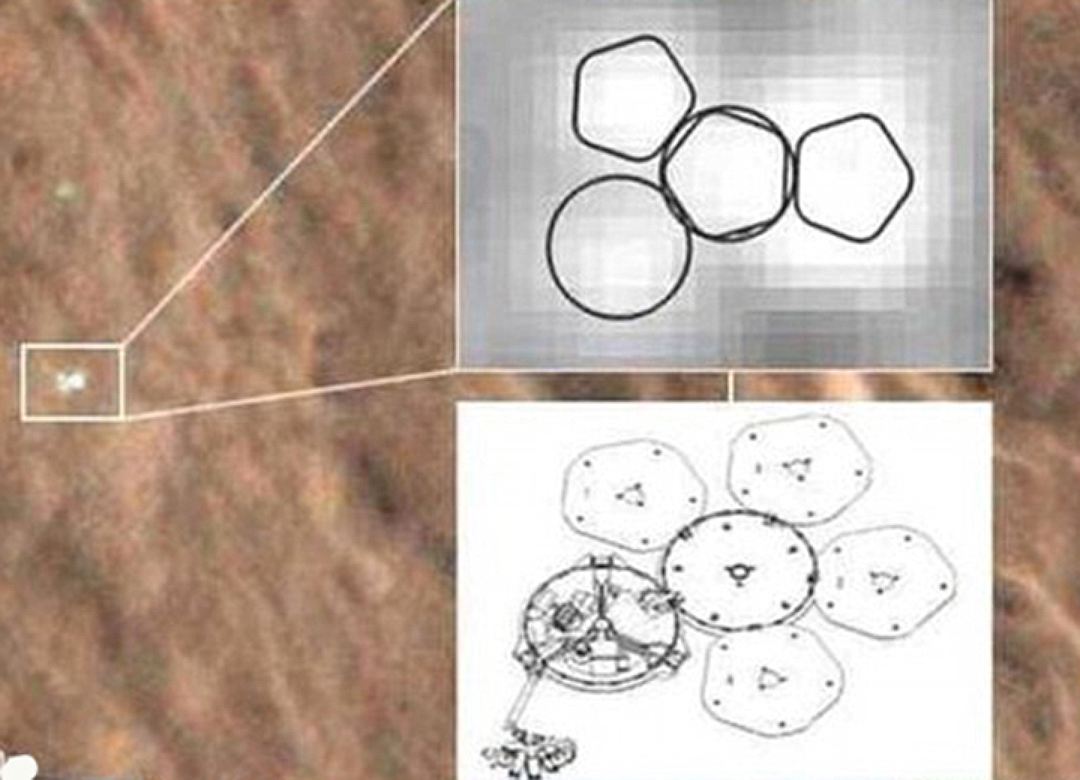On Mars, they actually found the Beagle 2 probe missing 12 years ago.
This was done thanks to a new image processing technique.

The Beagle 2 spacecraft, missing on landing on Mars on December 25, 2003, was indeed found. The first findings of the discovery came back last year , when NASA managed to capture a certain white object using a HiRise camera mounted on an orbital Martian MRO vehicle. Immediately after that, scientists assumed that the spacecraft had landed intact in Mars, but the radio antennas could not be released, and therefore the connection with the probe was lost forever.
')
After a careful study of the picture, the scientists concluded that the system did not turn around completely . Now, thanks to a new image processing technique, scientists were able to confirm the fact of the Beagle 2 discovery. Experts told about their project in an article published in the journal Planetary and Space Science .
It shows how and what was found last year.
The method of image processing proposed by scientists allows to improve the detail of the image from 25 cm to 5 cm.

All the same pictures taken with the HiRISE camera mounted on a NASA Mars Reconnaissance Orbiter (MRO) orbital device were taken as the source material. As for the methodology, scientists use several pictures of the same terrain, taken from different angles. Photos are uploaded to a PC with special software, and the machine processes these images. As a result, some graphic elements can be enhanced, and the picture itself can be made clearer.


Another example of the processed (bottom) and source (top) image. On the processed image clearly visible traces left by the Spirit rover
As for Beagle 2, even a processed image cannot be called clear. But still the form of the device is visible, there is already no doubt.

The processed images are the authors of the image processing technique called “a bird's-eye snapshot”. In their opinion, the technique can be very useful for pre-flight preparation of the same rover. The place of the proposed landing of the system is photographed, the photo is processed, and viewed, checking for possible problems. If all is well, the device is sent to Mars.

As for the Beagle 2 apparatus, now the British Space Agency believes that the spacecraft nevertheless landed, and gently. It was even possible to uncover two solar panels out of four. But the antenna failed to release.

The Beagle 2 spacecraft, missing on landing on Mars on December 25, 2003, was indeed found. The first findings of the discovery came back last year , when NASA managed to capture a certain white object using a HiRise camera mounted on an orbital Martian MRO vehicle. Immediately after that, scientists assumed that the spacecraft had landed intact in Mars, but the radio antennas could not be released, and therefore the connection with the probe was lost forever.
')
After a careful study of the picture, the scientists concluded that the system did not turn around completely . Now, thanks to a new image processing technique, scientists were able to confirm the fact of the Beagle 2 discovery. Experts told about their project in an article published in the journal Planetary and Space Science .
It shows how and what was found last year.
The method of image processing proposed by scientists allows to improve the detail of the image from 25 cm to 5 cm.

All the same pictures taken with the HiRISE camera mounted on a NASA Mars Reconnaissance Orbiter (MRO) orbital device were taken as the source material. As for the methodology, scientists use several pictures of the same terrain, taken from different angles. Photos are uploaded to a PC with special software, and the machine processes these images. As a result, some graphic elements can be enhanced, and the picture itself can be made clearer.


Another example of the processed (bottom) and source (top) image. On the processed image clearly visible traces left by the Spirit rover
As for Beagle 2, even a processed image cannot be called clear. But still the form of the device is visible, there is already no doubt.

The processed images are the authors of the image processing technique called “a bird's-eye snapshot”. In their opinion, the technique can be very useful for pre-flight preparation of the same rover. The place of the proposed landing of the system is photographed, the photo is processed, and viewed, checking for possible problems. If all is well, the device is sent to Mars.

As for the Beagle 2 apparatus, now the British Space Agency believes that the spacecraft nevertheless landed, and gently. It was even possible to uncover two solar panels out of four. But the antenna failed to release.
Source: https://habr.com/ru/post/372173/
All Articles